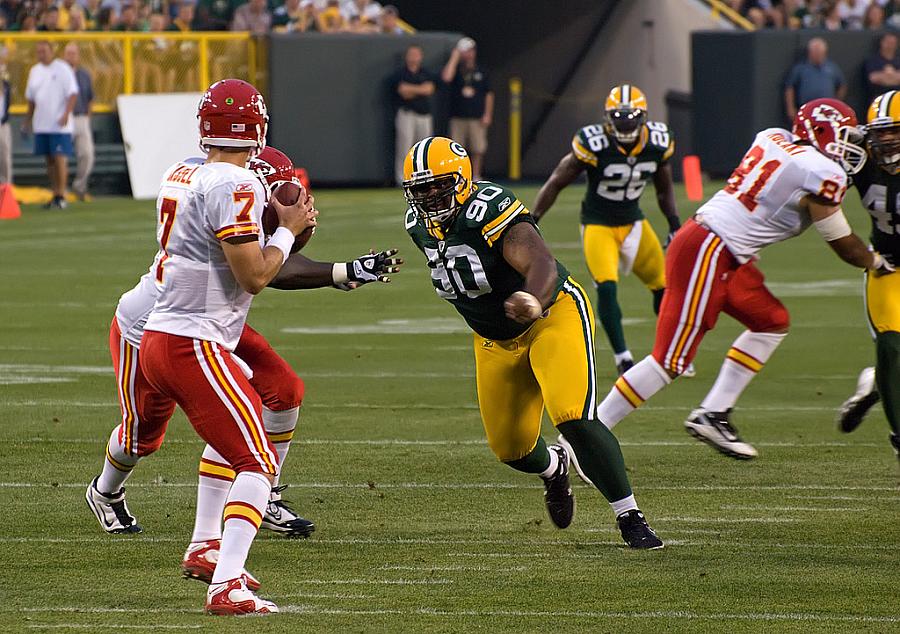Hit After Hit: Hard to Blame Football for Jovan Belcher's Off-Field Violence

After the death of Jovan Belcher, the Kansas City Chiefs linebacker, this weekend, I was about to call my brother Andrew to ask if he had any thoughts. He beat me to it and proposed the post below. You may remember his "Hit After Hit" post from earlier in the football season. The first part of his new post is below. The second part will run Friday.
On Saturday morning, news broke that Kansas City Chiefs linebacker Jovan Belcher had killed his girlfriend—the mother of his three-month-old child—and then taken his own life. Not long after, people began to speculate that head trauma might have led him down such a terrible path.
A friend of Belcher’s wrote deadspin.com that before the shootings Belcher "was dazed and was suffering from short-term memory loss" as the result of a game two weeks prior against the Cincinnati Bengals. He suggested that the game footage be reviewed because it would reveal Belcher "took a few hits to the head directly."
But we shouldn’t look for answers on game film, both because the chain of events and psychological forces that create such a horrific outcome can rarely be so clearly pinpointed and because, as suggested here before, some of the most important damage on the football field is so routine as to escape notice.
Big hits are no more the culprit in the Belcher murder-suicide than they are in the ongoing story of head trauma in football, and an undue attention in either case shifts our focus away from the best approaches to safeguard the lives of football players.
On the day after the shooting, the journal Brain published a study highlighting a fact that is starting to gain traction in coverage of this issue. Chronic traumatic encephalopathy (CTE), the study concluded, "is a consequence of repetitive mild traumatic brain injury." Some of the stories about Belcher’s possible brain trauma history mentioned this fact, and hopefully it will begin to reframe the head injury discussion.
Only through slicing up the brain after a player’s death does it become possible to definitively say whether he was suffering from CTE. Until that point, we are left only to interpret highlight reels, injury reports, and tales of erratic behavior. But these don’t tell the whole story. Neither footage of scary hits nor even a postmortem CTE diagnosis would prove head trauma caused his violent acts.
The reverse is also true. Chiefs owner Clark Hunt said Belcher was "a player who had not had a long concussion history." Yet we now know that concussion history is not the same as a history of brain injury. On his concussion blog, athletic trainer Dustin Fink keeps a running tally of concussion reports in the NFL. Defensive backs, he has shown, have led the league in this injury since 2010, which is not surprising since they often come flying into receivers or kick and punt returners.
But this week’s Brain study shows again what has been revealed in previous studies: linemen, the players with more and smaller hits, seem to suffer the most from CTE. Of the 35 former professional football players incorporated into the study, 34 showed CTE signs. Of these, 26% were offensive lineman; 6% were defensive backs.
Importantly, this study was not a random sample of football players — researchers can only use the brains made available to them — and of course some positions are more represented on the field than others. But the continued preponderance of linemen as CTE sufferers does lend further support to the idea that when our eyes follow the ball, they are avoiding the unglamorous trauma happening every down.
Next: Football Concussions and their Effects Remain Elusive
Related Content:
Hit After Hit: Focus on Most Jarring Football Collisions Misses the Point
A Public Death: NFL Concussion Crisis Documented with Death Certificates
Repeated Concussions Can Cause Lifelong Damage To The Brain
What the NFL and the Homeless Have in Common
Photo credit: Mike Morbeck via Flickr
